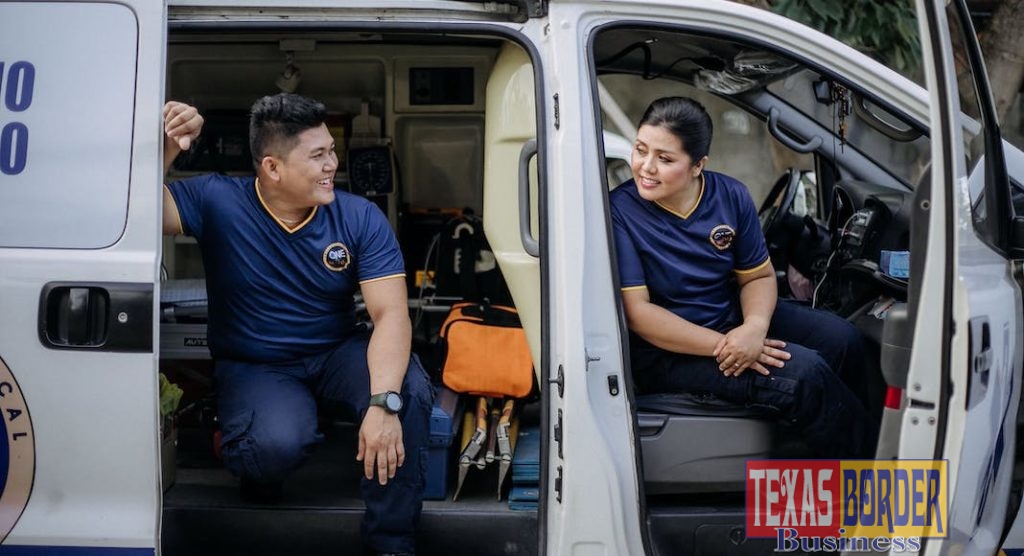NEW RESPONSE RATE RESOURCES: Check if your community is on track
People can do their part by responding to the 2020 Census now — online, by phone, or by filling out a paper form

Texas Border Business
WASHINGTON – As the country grapples with the effects of coronavirus, it’s clear that weathering pandemics calls for careful emergency planning, assessing and protecting those most at risk, and providing lifesaving resources to people affected. That starts with accurate census data and a complete count.
- New analysis by The Center for Urban Research at the CUNY Graduate Center shows the most accurate census data come from households who self-respond. The Center has newly updated its searchable online map of communities historically missed by the census to include self-response data so census advocates and individuals can check in to make sure their communities are on track compared to previous decennial censuses. The Census Counts campaign coalition uses this map to inform its Get Out the Count (GOTC) outreach and communications strategies.
- Census data are critical for emergency planning and response and the social programs directed by census data have helped keep people afloat in the wake of coronavirus. When people go uncounted in the census or data are inaccurate, community resources are stretched thin. Better data will lead to better emergency response.
- Households can do their part by self-responding to the census online, by phone, or by completing a pre-stamped paper form. It’s quick, easy, and can be done alone at home.
See background below for additional information
Steven Romalewski, CUNY Mapping Service director, Center for Urban Research, CUNY Graduate Center
“The need for Americans to do their part and fill out their census questionnaire is ever more important and still eminently doable. If you self-respond sooner than later, you avoid a knock at your door later from a Census Bureau staffer whose job is to count you in-person. The Census Bureau gives everyone the option of responding online, by phone, or by mail, so every household should strive to respond on their own,” Steven Romalewski, director of the CUNY Graduate Center’s Mapping Service, said. “A fair and accurate 2020 Census depends on it.
“Our map not only highlights census response in past censuses, but the map will give people at home something to do in the days ahead *after* they’ve filled out the questionnaire, by checking the response rate progress for their community every day from Friday through July.”
Beth Lynk, Census Counts campaign director, The Leadership Conference Education Fund
“The 2020 Census is designed so you can get counted at home by going online, calling the Census Bureau, or filling out the paper form. When households respond to the census on their own, it’s easier for the country to get the complete count we need to support emergency planning and recovery. Everyone has a part to play in participating in the 2020 Census. Make sure your community gets the funding and critical resources it needs to weather disaster and to thrive day-to-day by getting counted today.
“It’s more critical than ever that census advocates work alongside community members to make sure everyone gets counted. Tracking self-response rates with the CUNY Hard-to-Count Map will help ensure that organizations reach out to the right communities, at the right time, and with the right resources.”
BACKGROUND:
Census Data Supports Coronavirus Response Efforts
Census data are critical for emergency planning and response. In the case of coronavirus, they can help identify where people who are vulnerable due to advanced age live so officials can implement key prevention efforts. Many of the resources people across the country are relying on in the wake of coronavirus due to illness, job loss, or ongoing need are directed by census data, including:
- Health Care: Medicaid, Medicare, Child Health Insurance Program
- Workforce Assistance: Unemployment Insurance, Aid for dislocated workers
- Food Assistance: Supplemental Nutrition Assistance Program, Special Supplemental Nutrition Program for Women, Infants, and Children
- Disability Services
- Senior Services
NEW Resources: Census Self-Response Is Critical and Tracking It Is Easier than Ever
- Hard-to-Count 2020 Map: The Center for Urban Research (CUR) at the CUNY Graduate Center has newly updated its searchable online 2020 Census map with self-response trends from the past two decennial censuses, to provide historical context as stakeholders like the Census Counts campaign fine-tune their GOTC plans and participate in the U.S. Census Bureau’s Response Rate Challenge. People can follow along from home and see how their own community is doing and whether they need to spread the word about the census to their own networks. 2020 data will appear as the bureau publishes its rates.
- Census Self-Response Rates Mapped and Analyzed: 2000, 2010, and (soon) 2020: A new report from CUR analyzes state self-response trends from 2000-2010 and shows the relationship between census self-response and data accuracy.
- Weekly analysis of the 2020 rates: CUR will work closely with other census experts to analyze the self-response rate trends on a weekly basis, to provide context and interpretation for census stakeholders who can use this information to reprioritize their GOTC strategies as needed, and for philanthropic funders, journalists, elected officials, and others who will be following the progress of the 2020 Census.
Information on self-response options and how the census counts people in different living situations can be found here.
The Leadership Conference Education Fund builds public will for federal policies that promote and protect the civil and human rights of all persons in the United States. The Education Fund’s campaigns empower and mobilize advocates around the country to push for progressive change in the United States. It was founded in 1969 as the education and research arm of The Leadership Conference on Civil and Human Rights. For more information on The Education Fund, visit civilrights.org/edfund/.
The Graduate Center of The City University of New York is a leader in public graduate education, providing doctoral and master’s education for the public good. The Graduate Center is located in the heart of Manhattan and set within the large and multi-campus City University of New York (CUNY). It fosters advanced graduate education, original research and scholarship, innovative university-wide programs, and vibrant public events that draw upon and contribute to the complex communities of New York City and beyond. Through a broad range of nationally prominent doctoral programs, the Graduate School prepares students to be scholars, teachers, experts, and leaders in the academy, the arts and in the private, nonprofit, and government sectors. Committed to CUNY‘s historic mission of educating the children of the whole people, we work to provide access to graduate education for diverse groups of highly-talented students, including those who have been underrepresented in higher education.













